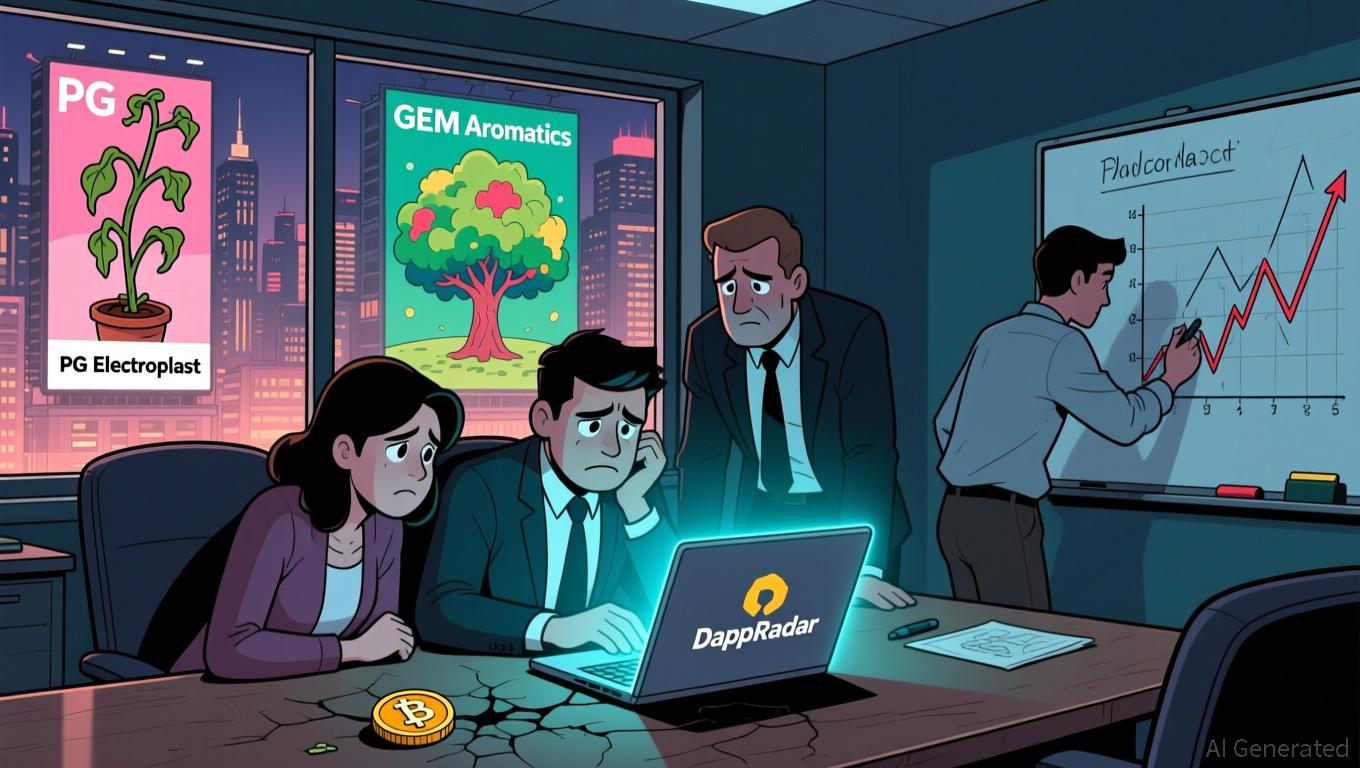DappRadar's Shutdown Reflects Challenges Faced by the Industry Amid Market Volatility
- Web3 analytics firm DappRadar announced its shutdown due to "financially unsustainable market conditions," causing its RADAR token to drop 30%. - Companies like PG Electroplast and GEM Aromatics reported revenue declines amid U.S. tariffs, GST changes, and raw material costs, reflecting broader economic challenges. - Geox cut 2025 sales forecasts by high single digits after 6.2% year-to-date revenue fall, while cost cuts helped stabilize its EBIT margin. - Tech stocks face volatility: Nvidia downgraded a
DappRadar, a prominent name in Web3 analytics, has announced it will soon cease operations, marking a significant departure from the DApp monitoring industry after seven years. Founders Skirmantas Januškas and Dragos Dunica
DappRadar’s closure comes amid a series of strategic shifts by companies facing economic challenges. For example, PG Electroplast, a leading provider of electronic manufacturing services (EMS) and plastic molding,

The difficulties faced by these organizations illustrate a global economic environment shaped by geopolitical instability, evolving regulations, and changing consumer preferences. For instance,
As investors reconsider their long-term commitments, the RADAR token’s performance has become central to debates about the sustainability of Web3 analytics businesses. The token’s steep fall reflects wider concerns among investors about the prospects for blockchain analytics.
Market volatility is also affecting technology stocks, prompting analysts to reassess their positions in fast-growing firms.
DappRadar’s closure marks a pivotal moment for the Web3 analytics industry, joining a broader movement of companies adjusting to an environment defined by unpredictability. Across sectors from manufacturing to cloud technology, businesses are striving to balance innovation with financial discipline, navigating a landscape shaped by regulatory, economic, and technological shifts.
Disclaimer: The content of this article solely reflects the author's opinion and does not represent the platform in any capacity. This article is not intended to serve as a reference for making investment decisions.
You may also like
Fed Weighs Job Growth Against Inflation Concerns in 2026 Interest Rate Decisions
- The Fed plans two 2026 rate cuts amid weak labor markets and stubborn inflation, balancing job support with inflation risks. - Internal FOMC divisions persist, with Vice Chair Jefferson advocating caution and Governor Waller pushing for aggressive cuts, while Trump’s appointee Miran amplifies easing pressure. - Incomplete data from a government shutdown complicates decisions, and market expectations for a December cut dropped to 42.9% amid inflation concerns. - J.P. Morgan urges diversification to hedge

Bitcoin News Update: The Cryptocurrency Market's Ongoing Struggle: Careful Hopefulness Against Persistent Threats
- Crypto market shows stabilization as funding rates on major exchanges return to neutrality after overselling, per Coinglass data. - Bitcoin's 14-day RSI dipped below 30 (oversold level) on Nov 18, suggesting potential short-term rebound despite analysts' caution. - Institutional interest grows with Ark Invest adding $10.2M in Bullish shares, while Hyperliquid (HYPE) shows on-chain resilience. - Macroeconomic risks persist, including U.S. government shutdown impacts and stalled ETF inflows, keeping $95,00

Bitcoin’s Steep Drop: An Ideal Combination of Economic Headwinds and Systemic Threats
- Bitcoin's 30% plunge from its October 2025 peak exposed systemic risks amid Fed's restrictive policy and 3% inflation persistence. - $1.27B in leveraged liquidations and CFTC's spot trading plans amplified volatility, linking crypto risks to traditional finance. - Institutional buyers like MSTR continued aggressive BTC accumulation, raising questions about market distortion during crises. - Investors must monitor Fed policy shifts, regulatory clarity, and leverage management as crypto's systemic vulnerab

Drivers of the Latest BTC Downturn: Institutional Withdrawal or Excessive Market Correction?
- Bitcoin's recent crash reflects $3.2B in institutional outflows since October, driven by liquidity stress and macroeconomic uncertainty. - Major ETFs like BlackRock's IBIT ($463M) and Fidelity's FBTC face massive redemptions as investors recalibrate risk profiles amid tightening financial conditions. - Structural shifts like Singapore's institutional-grade crypto futures signal long-term optimism, but coincide with Fed's restrictive policy (3% inflation) forcing deleveraging. - The correction appears liq
